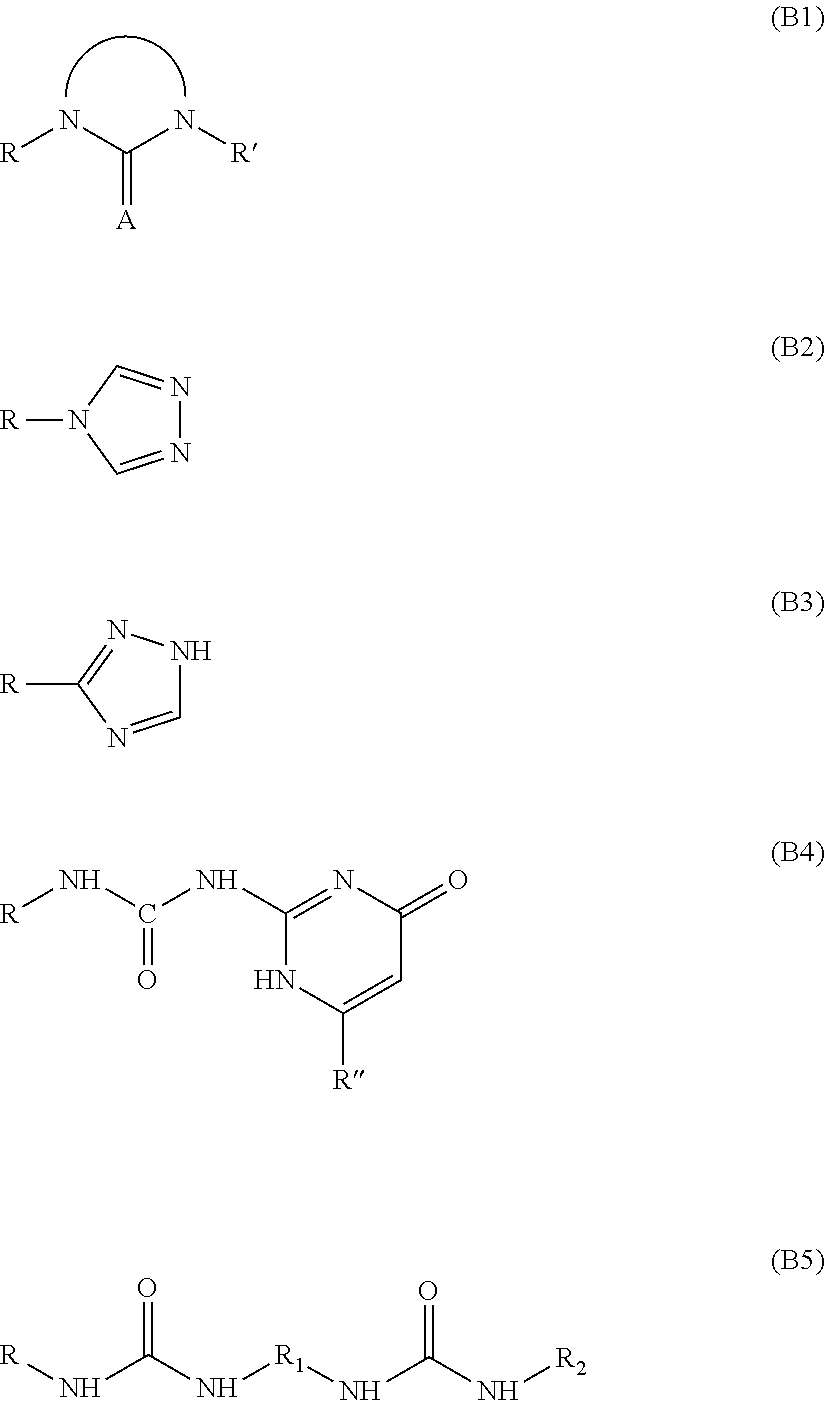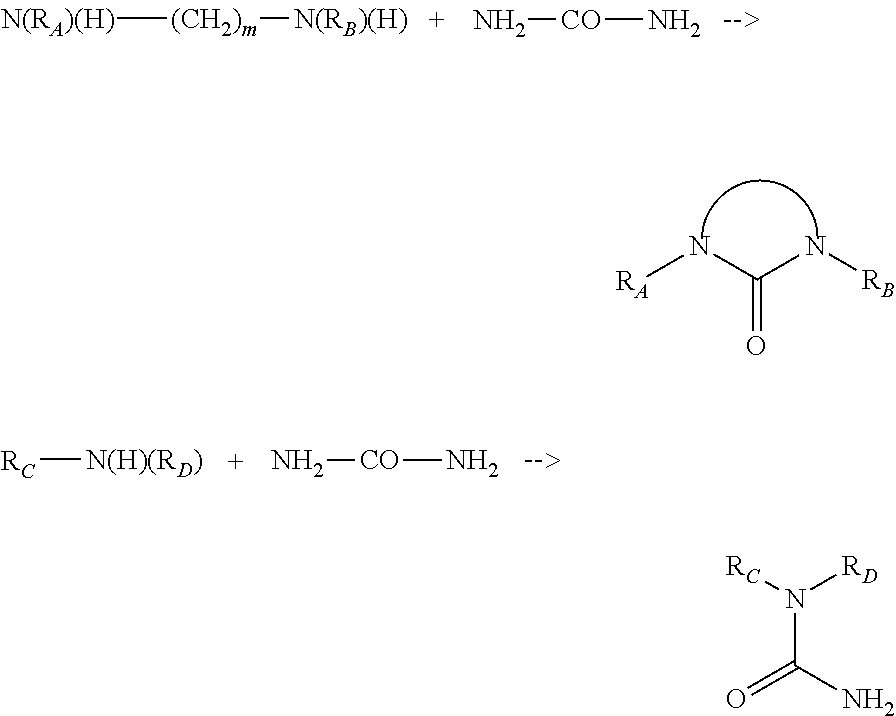Composition including a mixture of elastomer and supramolecular polymer
a technology of supramolecular polymer and elastomer, which is applied in the direction of adhesives, film/foil adhesives, textiles and paper, etc., can solve the problems of insufficient mechanical properties for inability to meet the requirements of many applications of rubber, and the cold resistance of self-healing supramolecular polymers described in the prior art, etc., to achieve the effect of advantageous balance of properties
- Summary
- Abstract
- Description
- Claims
- Application Information
AI Technical Summary
Benefits of technology
Problems solved by technology
Method used
Image
Examples
example 1
Preparation of a Supramolecular Polymer
[0169]First Step:[0170]Substep a: 76 g of Empol® 1016 [acid number 194, degree of monomer (4%), dimer (80%), trimer (16%)] and 6.7 g of purified UDETA (52 mmol), i.e. an [NH2] / [COOH] ratio of 0.2, are introduced into a reactor having a diameter of 60 mm and a nominal volume of 500 ml, fitted with a bottom valve, a device for regulating temperature by means of a heat-transfer fluid, a mechanical stirrer, a dropping funnel, a Dean-Stark apparatus and a gas inlet, preheated to 40° C. The temperature of the bath is brought to 150° C. for 8 hours under a stream of nitrogen of 500 ml / minute and with stirring at 280 rpm. During this step, infrared spectroscopy shows a decrease in the δNH2 signal (1505 cm−1), an increase in the νC=0 signal (1648 cm−1) and the release of water vapor. It is decided to stop the reaction when there is no longer any release of water vapor (8 hours in the present example).
[0171]After this substep, the reaction product is sto...
example 2
Preparing an Elastomer / Supramolecular Polymer Mixture
[0182]Initial Mixing in an Internal Mixer
[0183]The desired proportions of each of the components of the elastomer / supramolecular polymer mixture are introduced, at ambient temperature, in such a way that the total weight of the products introduced does not exceed 70 g, into a Brabender N50 internal mixer fitted with a temperature probe and a torque meter, rotating at 50 rpm. In this example, the elastomer is a synthetic polyisoprene Natsyn 2200 from the company Goodyear, having a glass transition temperature of −63° C. plus or minus 2° C., measured in a Q 10 DSC apparatus from TA Instruments, at a ramp speed of 10° C. / min, and the supramolecular polymer is that of Example 1. The mixture which, by self-heating will rise in temperature, is left to rotate for 5 to 10 min. During this time, the temperature has a tendency to stabilize at a value below 90° C., and the mechanical torque also reaches a stable value. After the mixing time,...
example 3
Preparation of a Series of Elastomer (Polyisoprene) / Supramolecular Polymer Mixtures Having Various Compositions and in the Presence of 10% by Weight of Carbon Black
[0196]Mixtures of various proportions of elastomer (synthetic polyisoprene) and of supramolecular polymer of Example 1 were prepared according to the procedure of Example 2, while adding 10% by weight, relative to the total mixture, of carbon black (Corax N550® from Degussa) during the step of mixing in an internal mixer. Tensile test specimens were prepared and conditioned and the tensile test described in Example 2 was carried out. table II shows the results obtained. The values correspond to means on 3 test specimens.
[0197]
TABLE IIMechanical properties of the mixtures and of their loadedcomponents (the first number of the mixtures correspondsto the % by weight of polyisoprene and the second correspondsto the supramolecular polymer)TensileArea understrengthStrain atthe curveProduct(MPa)break (%)[MPa × 100 mm / mm]Noncross...
PUM
| Property | Measurement | Unit |
|---|---|---|
| Poisson's ratio | aaaaa | aaaaa |
| Young's modulus | aaaaa | aaaaa |
| Young's modulus | aaaaa | aaaaa |
Abstract
Description
Claims
Application Information
 Login to View More
Login to View More - R&D
- Intellectual Property
- Life Sciences
- Materials
- Tech Scout
- Unparalleled Data Quality
- Higher Quality Content
- 60% Fewer Hallucinations
Browse by: Latest US Patents, China's latest patents, Technical Efficacy Thesaurus, Application Domain, Technology Topic, Popular Technical Reports.
© 2025 PatSnap. All rights reserved.Legal|Privacy policy|Modern Slavery Act Transparency Statement|Sitemap|About US| Contact US: help@patsnap.com



